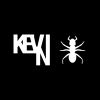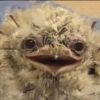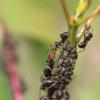- Formiculture.com
- Forums
- Gallery
- Members
- Member Map
- Chat

Any recommended ant species for first ant colony?
Started By
NikolaBale
, Jan 9 2017 4:23 PM
17 replies to this topic
#1
 Offline
-
Posted January 9 2017 - 4:23 PM
Offline
-
Posted January 9 2017 - 4:23 PM
I was thinking of getting a camponotus butt I'm going to pass i like the ant but when i realized it takes 2 years to get 100 workers i changed my mind. I want a species that has a medium growth rate I was thinking of messor.sp or tetramorium. butt does messor and tetramorium have that growth rate that I'm looking for other than that if you have any other recommendations please say.
#2
 Offline
-
Posted January 9 2017 - 4:40 PM
Offline
-
Posted January 9 2017 - 4:40 PM
Where abouts do u live ? depends what species are around you. Camponotus would be my suggestion but if your concerned about growth rate Lasius Niger probably would be up their as i great beginner species
Formicarium Colonies:
Aphaenogaster longiceps
Test Tube Colonies:
Camponotus aeneopilosus
Iridomyrmex sp
Opisthopsis rufithorax
#3
 Offline
-
Posted January 9 2017 - 4:54 PM
Offline
-
Posted January 9 2017 - 4:54 PM
Messor are pretty big ants so they grow rather slow, also they need it very calm during colony founding as they are very sensitive to vibrations.
Tetramorium grow fast and are very resilient and adaptive and Lasius (niger/neoniger or flavius) is like THE beginner species as they are almost indestructible and grow at a very pleasant speed (not as ridiculously fast as Solenopsis bit not as slow as Camponotus either).
We should respect all forms of consciousness. The body is just a vessel, a mere hull.
Welcome to Lazy Tube - My Camponotus Journal
#4
 Offline
-
Posted January 9 2017 - 5:02 PM
Offline
-
Posted January 9 2017 - 5:02 PM
Whatever you actually find. ![]()
I think you are overestimating your own patience, btw. If you get your hands on a Camponotus queen, I doubt you'll feel the same way. ![]()
//edit: Oh, but by the mix of ants you are mentioning, I take it that you will be buying a colony...?
Edited by Batspiderfish, January 9 2017 - 5:03 PM.
- Antsinmycloset likes this
If you've enjoyed using my expertise and identifications, please do not create undue ecological risk by releasing your ants. The environment which we keep our pet insects is alien and oftentimes unsanitary, so ensure that wild populations stay safe by giving your ants the best care you can manage for the rest of their lives, as we must do with any other pet.
Exotic ants are for those who think that vibrant diversity is something you need to pay money to see. It is illegal to transport live ants across state lines.
----
Black lives still matter.
#5
 Offline
-
Posted January 9 2017 - 5:07 PM
Offline
-
Posted January 9 2017 - 5:07 PM
Whatever you actually find.
I think you are overestimating your own patience, btw. If you get your hands on a Camponotus queen, I doubt you'll feel the same way.
//edit: Oh, but by the mix of ants you are mentioning, I take it that you will be buying a colony...?
Agree with batspiderfish if u find a Camponotus you will not be dissapointed their size and appearance is very impressive the first time you find one. however if u are looking to buy a species see what's available in your area, The Gan Project on the antscanada website is not a bad place to start when looking to buy a queen ![]()
Formicarium Colonies:
Aphaenogaster longiceps
Test Tube Colonies:
Camponotus aeneopilosus
Iridomyrmex sp
Opisthopsis rufithorax
#6
 Offline
-
Posted January 9 2017 - 5:10 PM
Offline
-
Posted January 9 2017 - 5:10 PM
oh no I'm not buying anything all of those species that i listed are werry much native to where i liveWhatever you actually find.
I think you are overestimating your own patience, btw. If you get your hands on a Camponotus queen, I doubt you'll feel the same way.
//edit: Oh, but by the mix of ants you are mentioning, I take it that you will be buying a colony...?
#7
 Offline
-
Posted January 9 2017 - 5:13 PM
Offline
-
Posted January 9 2017 - 5:13 PM
well yes i love Camponotus its one of my favourite ants the thing is this is my first colony and if I'm goona keep ants it mite as well be a decent growing species so i can get a litte experience fasterAgree with batspiderfish if u find a Camponotus you will not be dissapointed their size and appearance is very impressive the first time you find one. however if u are looking to buy a species see what's available in your area, The Gan Project on the antscanada website is not a bad place to start when looking to buy a queen
Whatever you actually find.
I think you are overestimating your own patience, btw. If you get your hands on a Camponotus queen, I doubt you'll feel the same way.
//edit: Oh, but by the mix of ants you are mentioning, I take it that you will be buying a colony...?
#8
 Offline
-
Posted January 9 2017 - 5:18 PM
Offline
-
Posted January 9 2017 - 5:18 PM
Camponotus has the additional benefit that you don't really have to worry about their living space for the first two years. Test tubes (and at the end of year 1 a small formicarium or additional/larger test tubes) will be enough.
You may even be able to identify individual workers by their behavior or certain physical attributes (especially with the rare majors), something that is barely possible with ants that grow into the hundreds immediately.
In year 3 Camponotus colony population usually explodes massively into the thousands.
You may even be able to identify individual workers by their behavior or certain physical attributes (especially with the rare majors), something that is barely possible with ants that grow into the hundreds immediately.
In year 3 Camponotus colony population usually explodes massively into the thousands.
I'd recommend Lasius (Garden ants) or Tetramorium (Pavement ants). Both are excellent beginner species with good growth rate and it's hard to screw up with these.well yes i love camponotus its one of my favourite ants the thing is this is my first colony and if I'm goona keep ants it mite as well be a decent growing species so i can get a litte experience faster
Edited by Serafine, January 9 2017 - 5:19 PM.
We should respect all forms of consciousness. The body is just a vessel, a mere hull.
Welcome to Lazy Tube - My Camponotus Journal
#9
 Offline
-
Posted January 9 2017 - 5:25 PM
Offline
-
Posted January 9 2017 - 5:25 PM
I was thinking of getting a camponotus butt I'm going to pass i like the ant but when i realized it takes 2 years to get 100 workers i changed my mind. I want a species that has a medium growth rate I was thinking of messor.sp or tetramorium. butt does messor and tetramorium have that growth rate that I'm looking for other than that if you have any other recommendations please say.
I used to be a fan of camponotus butt they took a long time to grow. I liked smaller species too, butt they also were not big enough to satisfy me.
Butt anyway I recommend a medium species like Lasius neoniger.
Hit "Like This" if it helped.
#10
 Offline
-
Posted January 9 2017 - 5:46 PM
Offline
-
Posted January 9 2017 - 5:46 PM
The AntsCanada video is a little misleading, as they list broad ranges of possible population numbers for each subsequent year. Honestly, I'm glad to have a colony from this genus that I can take my time with, even though my current Camponotus pennsylvanicus queen is an overachiever who produced 20+ workers in her first 4-5 months. ![]()
If you've enjoyed using my expertise and identifications, please do not create undue ecological risk by releasing your ants. The environment which we keep our pet insects is alien and oftentimes unsanitary, so ensure that wild populations stay safe by giving your ants the best care you can manage for the rest of their lives, as we must do with any other pet.
Exotic ants are for those who think that vibrant diversity is something you need to pay money to see. It is illegal to transport live ants across state lines.
----
Black lives still matter.
#11
 Offline
-
Posted January 9 2017 - 6:39 PM
Offline
-
Posted January 9 2017 - 6:39 PM
I've enclosed what I believe are the best beginner ants of each general area. NOTE: for some of the sections (Fungus Farming, Rarities), the ants there are hard to keep but are easier than other species in that general field. Also, I've never really got to keep all of these ants (I can only keep hawaiian ones) but I got this idea from a wide range of journals.
Best beginner ants:
Standard:
Lasius Niger (common, medium, easy to feed, nonaggressive)
Ochetellus Glaber (easy to feed, small)
Technomyrmex Difficilis (easy to feed, small, workers can reproduce, queens can accept any workers, semi claustral but can have workers introduced to them at that stage)
Camponotus Pennsylvanicus (common, easy to feed, large, semi-aggressive, but can be fragile during founding stage)
Fungus Farming:
Acromyrmex Versicolor (Found in large numbers, more likely to regurgitate fungus "seed", large, farms by using dead leaves, fragile during founding stage)
Atta Texana (Found in large numbers, more likely to regurgitate fungus "seed", farms by using live leaves, fragile during founding stage)
Poisonous:
Solenopsis Invicta (Common, hardy, medium, aggressive but stings don't hurt if only one worker stings, hardy during founding stage)
Semi-Claustral:
Tetramorium Bicarinatum (Easy to feed, hardy during founding stage)
Odontomachus sp. (Easy to feed, fairly hardy during founding stage)
Hypoponera sp. (Easy to feed, sort of hardy during founding stage if dirt is provided)
Rarities:
Cephalotes sp. (easy to make a setup for, nonaggressive, don't try to escape often, fragile during founding stage)
Leptogenys Falcigera (woodlouse predator, no nuptial flights, hardy, no founding stage known to me)
Hawaiiant (Ben)
Keeper of
Miniature Labradoodle
Baby Wolf Spider
Mud Dauber wasp larvae
Ochetellus Glaber
Solenopsis Geminata
Brachymyrmex Obscurior
Cardiocondyla Emeryi
Tetramorium Bicarinatum
Plagiolepis Alluaudi
Anoplolepis Gracilipes
Technomyrmex Difficilis
Pheidole Megacephala
Aholehole fish
Cowrie snail
Sea Fan Worm
100+ sea squirts
Tree seedlings
Ghost Crab
Day Gecko
Small Fat Centipede
Endemic Lacewing larva
Vernal Pool shrimps
Keeper of
Miniature Labradoodle
Baby Wolf Spider
Mud Dauber wasp larvae
Ochetellus Glaber
Solenopsis Geminata
Brachymyrmex Obscurior
Cardiocondyla Emeryi
Tetramorium Bicarinatum
Plagiolepis Alluaudi
Anoplolepis Gracilipes
Technomyrmex Difficilis
Pheidole Megacephala
Aholehole fish
Cowrie snail
Sea Fan Worm
100+ sea squirts
Tree seedlings
Ghost Crab
Day Gecko
Small Fat Centipede
Endemic Lacewing larva
Vernal Pool shrimps
#12
 Offline
-
Posted January 9 2017 - 7:19 PM
Offline
-
Posted January 9 2017 - 7:19 PM
In my experience, you don't have much choice. You cultivate whatever you can find and hope for the best.
- Lemon07 likes this
~Dan
#13
 Offline
-
Posted January 9 2017 - 8:00 PM
Offline
-
Posted January 9 2017 - 8:00 PM
Both Tetramorium and Lasius neoniger make excellent beginner species, both are fully claustral (do not need food during the founding period) and are also pleometrophic (queens will sometimes gather into small groups in order to aid in brood care and the construction of the nest, increasing their chances of survival and their initial worker output. However, after a certain number of workers have eclosed, the queens will either fight or be selected to be killed by the workers until one remains. This is mainly due to the amount of resources consumed by the queens and how having to support a large number of them after the founding period would lead to the starvation of the colony.). practicing pleometrophic founding will allow you to create medium sized colonies readily. simply add several queens (1-6 for Lasius and 1-11 for Tetramorium) to a test tube setup of founding formicarium. If queens happen to aggressive towards one another, place them in the fridge for up to five minutes and make sure they are in contact with one another while unconscious, then warm them back up. If they continue to show aggressive behavior, repeat this task again. Queens that are from colonies that live closer to one another tend to be less aggressive towards one another as a rule of thumb, so it is best to keep queens from the same collection area together. I have found that of the two, Lasius has the least amount of complications in terms of aggressive behavior during the introduction period. Once your colony has grown to a certain size, queen deaths and worker fatalities are to be expected, but once the number of queens boils down to 2-4, remove all but one from the formicaria. Both of the ants have the ability to be raised using monogynous (one queen) founding as well. Both species of ants are opportunistic scavengers, but I have found that Lasius neoniger can be a bit picky (especially during and before hibernation) and Tetramorium tend to accept a larger range of food readily and are more predatorial (making them quite enjoyable to watch). Although both breed readily and quickly, Tetramorium seems to have a faster growth period from egg to adult and seems to lay batches of eggs at a quicker rate. Both prefer moderately humid nests and although I have never had success with this myself, I have heard Tetramorium respond well to reptile heating cables. Both ants require a well balanced diet of carbohydrates and proteins, however Lasius neoniger seems to respond better to a diet that leans slightly more towards carbohydrates. Tetramorium will also accept some seeds such as sesame. By using pleometrophic founding with Tetramorium (in this case, with 12 queens), I was able to reach a colony size of over 200 workers and 135 larvae in less than a year. If done well, pleometrophic founding can do wonders, but if done incorrectly, it can end disastrously. Both species can be found quite easily as well (Tetramorium : June - August / Lasius : August - September).
Edited by ctantkeeper, January 9 2017 - 8:17 PM.
- FeedTheAnts likes this
#14
 Offline
-
Posted January 9 2017 - 8:18 PM
Offline
-
Posted January 9 2017 - 8:18 PM
I was thinking of getting a camponotus butt I'm going to pass i like the ant but when i realized it takes 2 years to get 100 workers i changed my mind. I want a species that has a medium growth rate I was thinking of messor.sp or tetramorium. butt does messor and tetramorium have that growth rate that I'm looking for other than that if you have any other recommendations please say.
no it grows in a fast rate if kept well
#15
 Offline
-
Posted January 10 2017 - 9:40 AM
Offline
-
Posted January 10 2017 - 9:40 AM
The kind with six legs and mandibles.
Spoiler
#16
 Offline
-
Posted January 10 2017 - 9:53 AM
Offline
-
Posted January 10 2017 - 9:53 AM
Where are you located?
Currently own:
(1x) Camponotus Sp.
(1x) Pheidole aurivillii (?)
(1x) Monomorium Sp. (?)
Other
#17
 Offline
-
Posted January 10 2017 - 10:17 AM
Offline
-
Posted January 10 2017 - 10:17 AM
Montenegro Podgorica on balkans (south europe)Where are you located?
#18
 Offline
-
Posted January 10 2017 - 10:19 AM
Offline
-
Posted January 10 2017 - 10:19 AM
Messor are really cool. If not them then Lasius Niger.
Ant Keeping & Ethology Discord - 2000+ Members and growing
Statesideants.com - order live ants legally in the US
0 user(s) are reading this topic
0 members, 0 guests, 0 anonymous users























